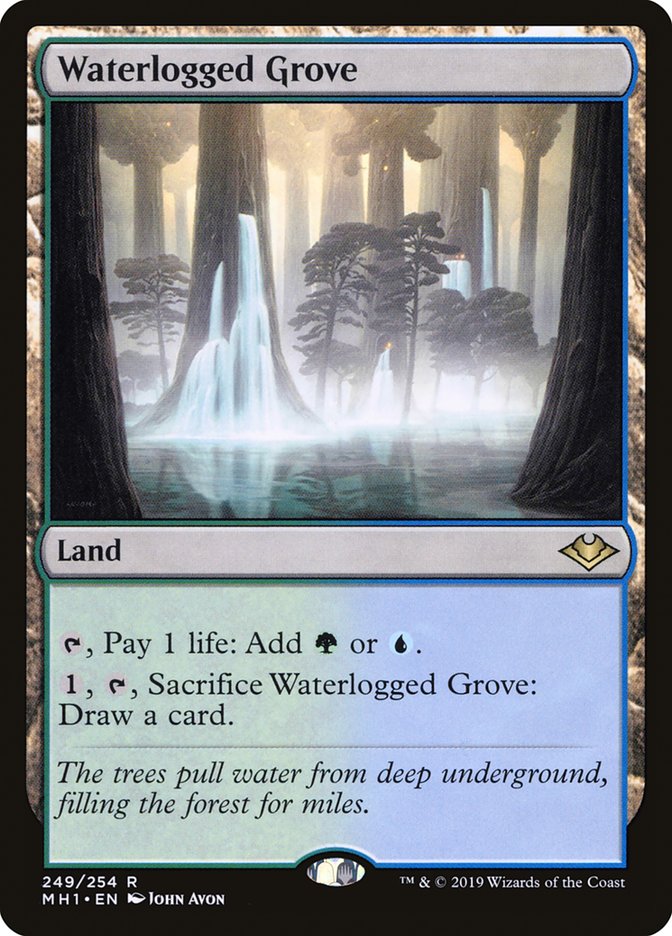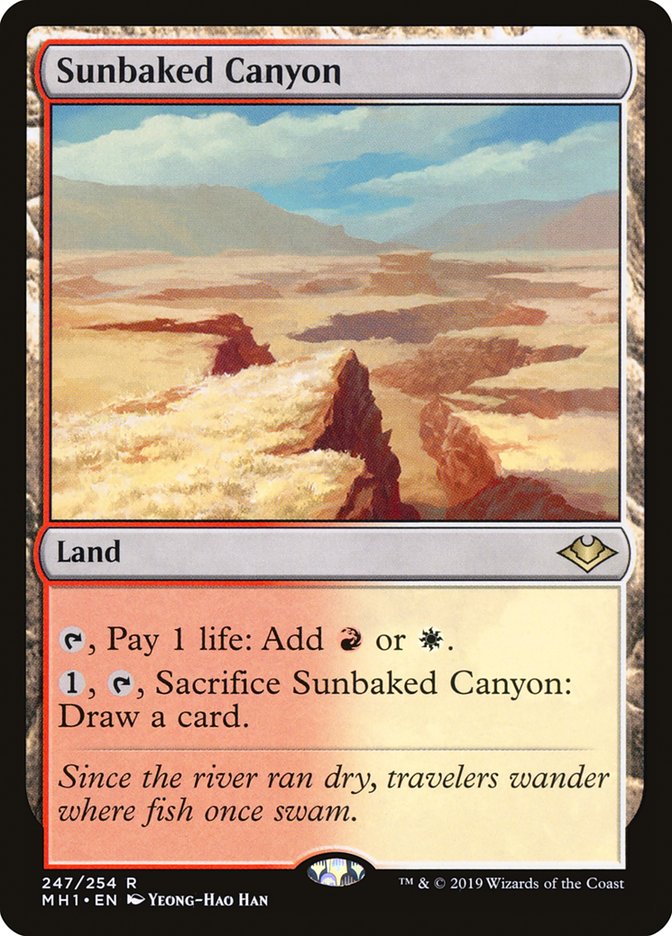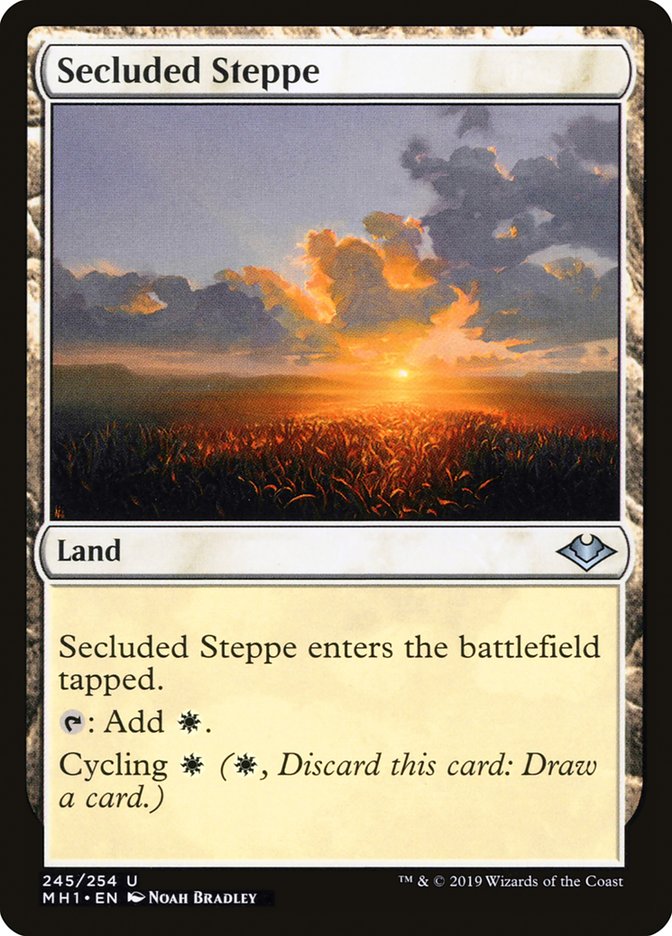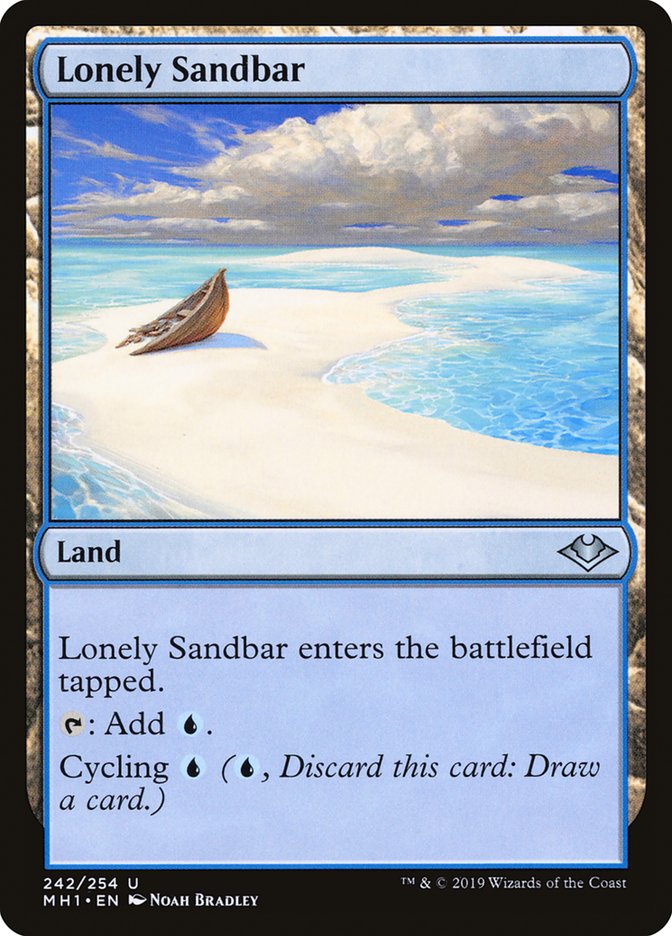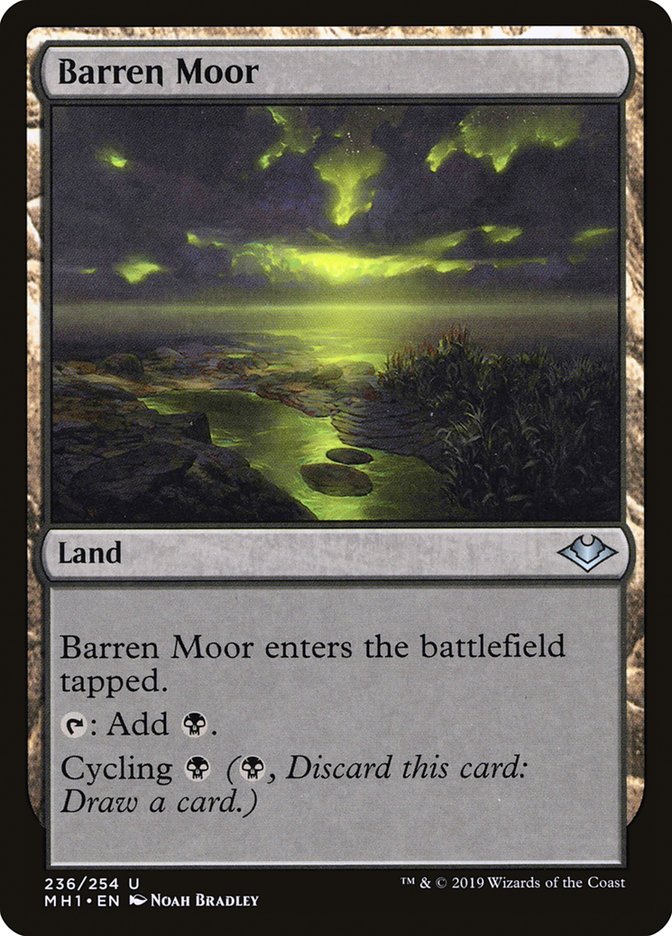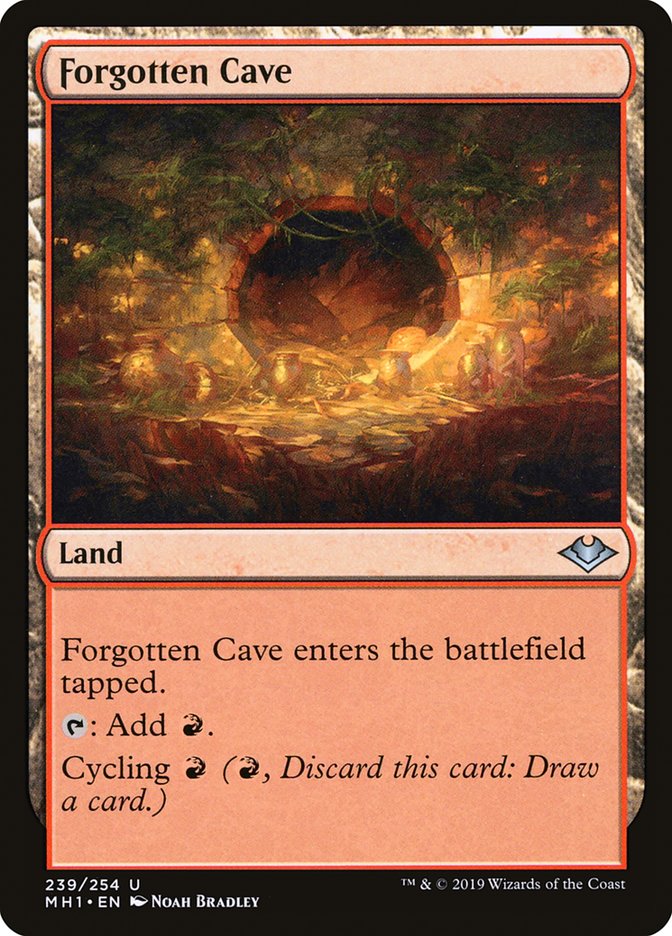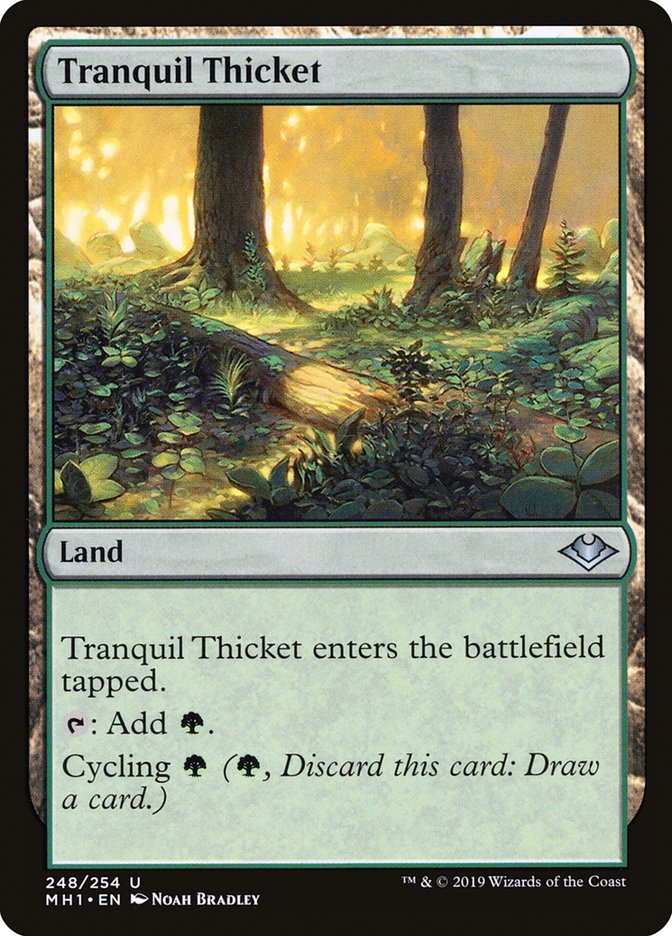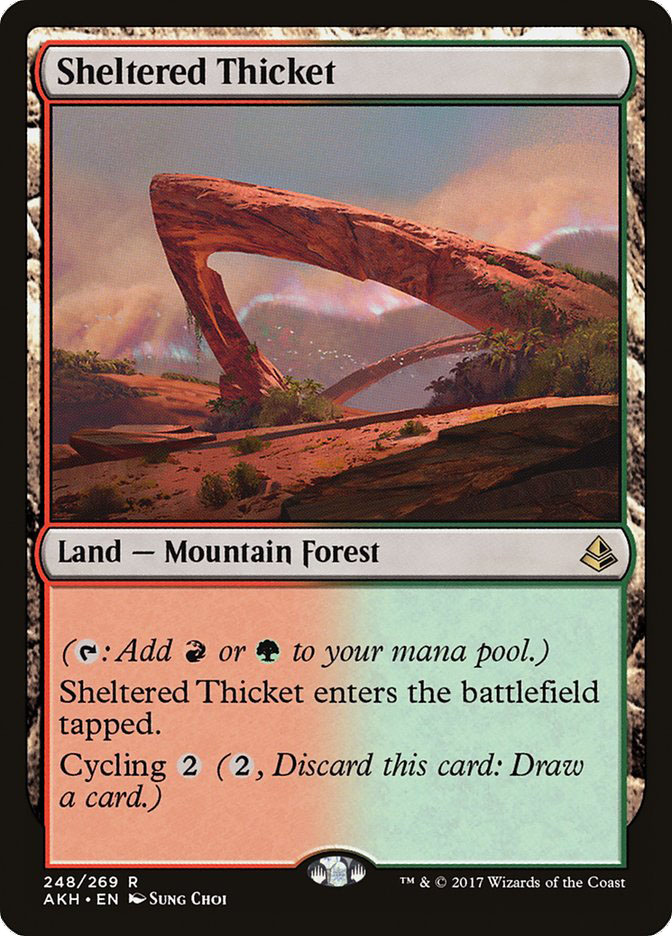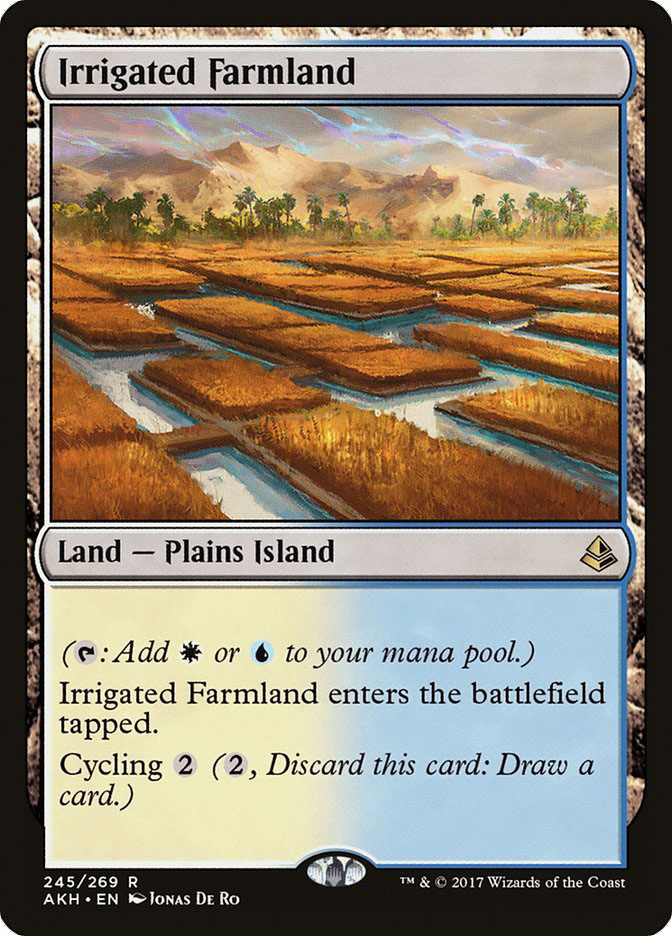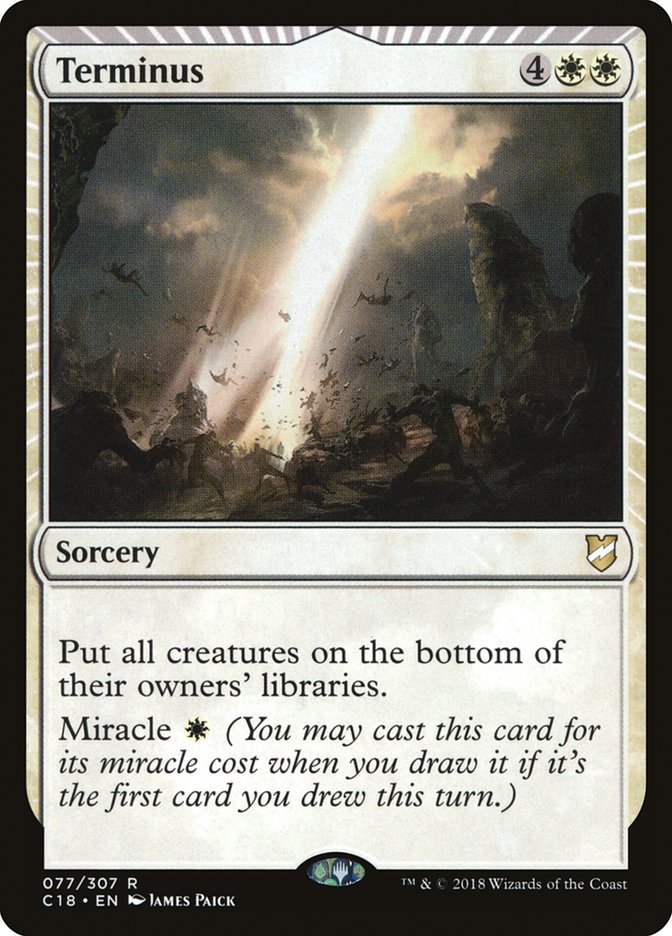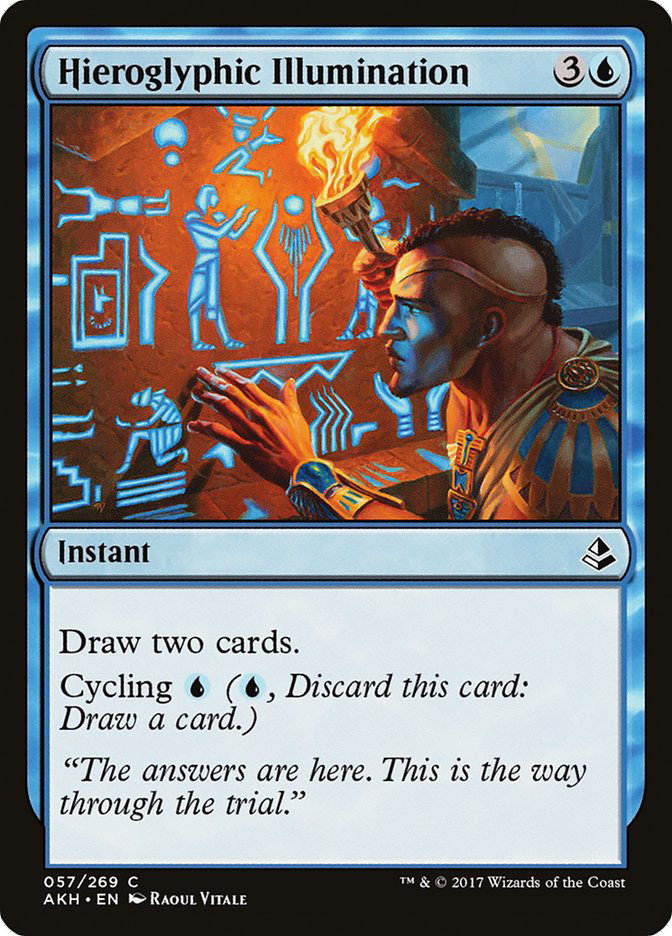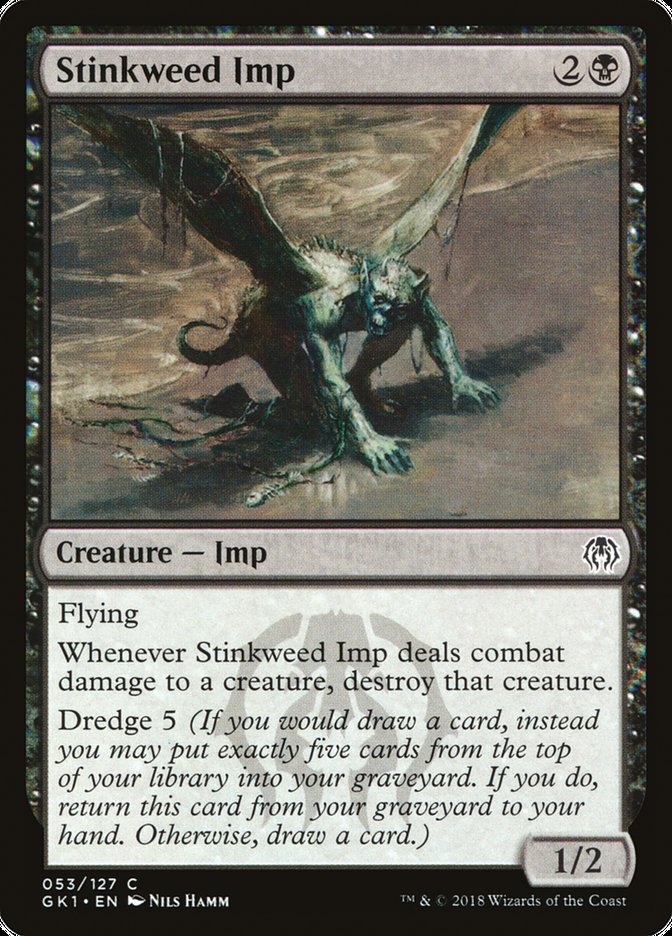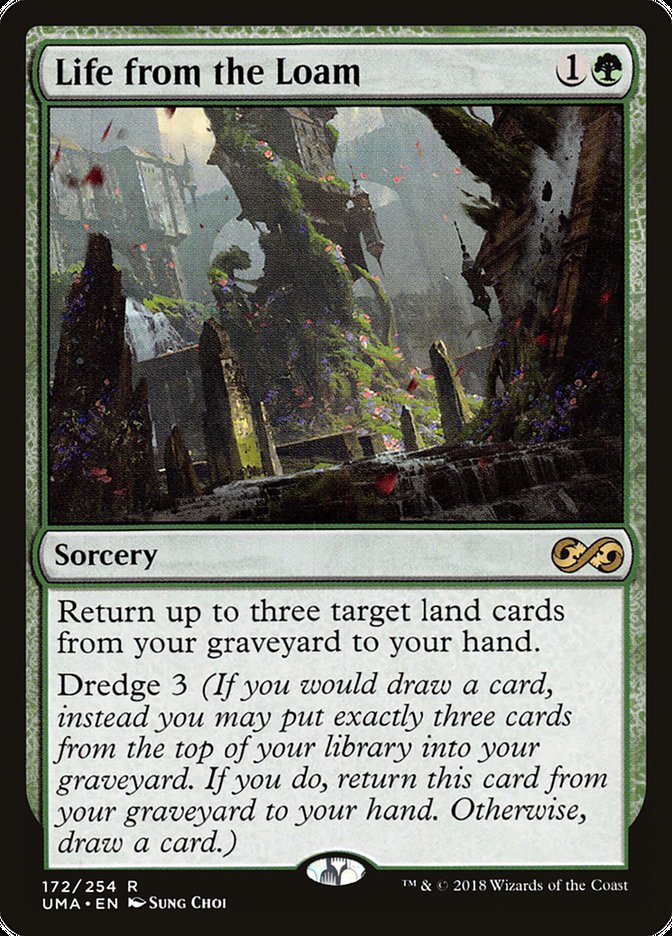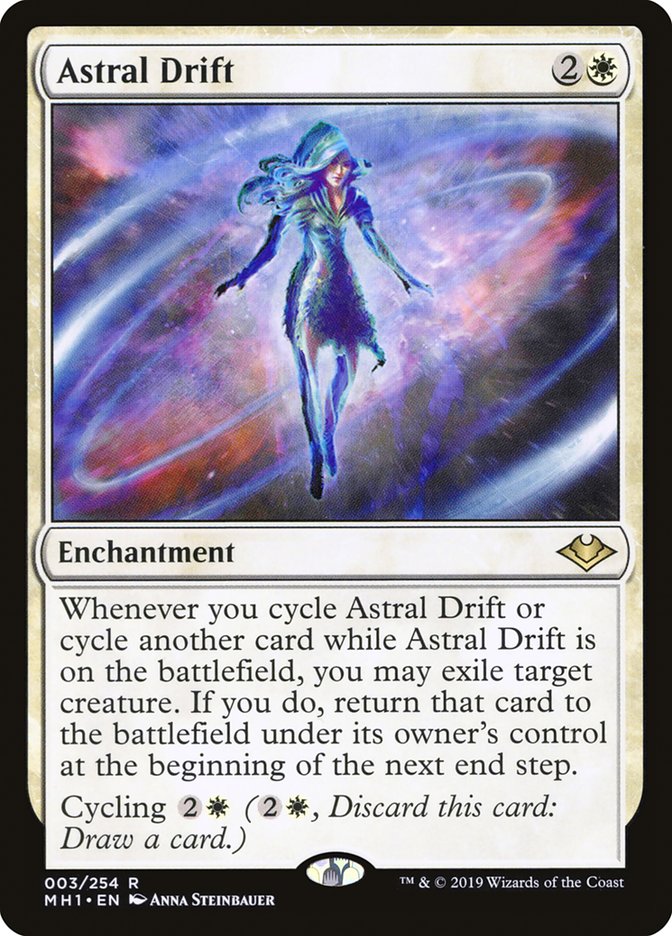When Modern Horizons was announced, one of the first questions on people’s minds once they’d finished fawning over the possibility of Force of Will and Counterspell entering the format was what land cycle would be included in the set. Cue lots of absurd murmurings about snow versions of the original dual lands, or legendary dual lands, or even legendary snow dual lands. Instead we got a land cycle that, whilst weaker, I’m personally much more excited to play with.
Wait, wait, no. The other land cycle.
You see, whilst the Horizon lands are definitely going to see more play and have much more raw power to them (there’s a reason why even monocoloured decks like Hardened Scales still wanted to play Horizon Canopy), they largely just improve previously existing strategies, helping ensure those decks flood less and can have more impactful topdecks as the game goes long. Horizon Canopy already existed in Modern, so if people really needed an effect like this to enable some sort of nonsense, it already existed, and people generally haven’t leant in to this effect for such purposes.
The Onslaught cycling lands, however, offer something new and different to Modern that could be the tool that was missing to make archetypes viable. Sure, we already had the Amonkhet cycling lands which have only seen a tiny amount of play – Sheltered Thicket used to see play in Dredge but has largely disappeared; has also seen play in Valakut, the Molten Pinnacle strategies but again does not see much play nowadays; and Irrigated Farmland has seen the tiniest bit of play in Azorius Control – but the difference between one and two mana for this effect is huge and should be the push needed to make an effect like this more playable.
Looking at the decks that have already shown some level of interest in cycling lands, it’s clear that Forgotten Cave would not go in TitanShift decks due to the fact it lacks the Mountain subtype. Lonely Sandbar in Azorius Control is much more interesting, though. Builds of the deck utilizing Terminus have always been interested in having one-mana instant-speed cantrips in their deck. It’s because of this that people realised how strong Opt is in the archetype, and Hieroglyphic Illumination has even seen play before as a way of having access to more of these cheap cantrips that help smooth out your draw and enable Terminus miracle-triggers, whilst also providing some upside if the game goes long.
I think Lonely Sandbar fits in to a very similar space here with different upsides. Lonely Sandbar inclines you towards playing a slightly higher land count, meaning there isn’t as much pressure on you to aggressively use your cantrips to find land drops, and in exchange you get to cycle the Lonely Sandbars as the game goes long to resist flooding. Whilst Terminus is not the go-to sweeper in Azorius Control at present, it’s not hard to imagine a world where recursive creatures or creatures with on-death triggers come back in a big way (especially with cards like Yawgmoth, Thran Physician and Undead Augur being introduced to the format via Modern Horizons), and then Azorius Control might end up moving back towards Terminus and wanting to incorporate some number of Lonely Sandbar to synergise with this.
There are a few other decks it’s easy to see cycling lands finding a home. Mono-Blue Living End already plays somewhere in the region of fourteen cyclers, and having access to Lonely Sandbar could be enough to justify Drake Haven as a sideboard card against control and midrange decks. Forgotten Cave fits well in to Mono-Red Prison decks that can happily add a few tap-lands, considering they often don’t use their mana on Turn 1 if they don’t draw a Simian Spirit Guide, and the cycling is potent in a deck that can struggle to have enough card filtering as the game goes long. In general you will want to avoid putting the cycling lands in decks with three or more colours of mana, since they don’t help fix your mana in that scenario, and you don’t want them in decks that have a lot of one-mana plays and are looking to curve out, since tapped lands are so punishing in decks like that.
That’s all well and good, and these places sound like pleasant enough homes for the cycling lands, but then we get to Dredge. More specifically, we get to Life from the Loam. Even without Life from the Loam synergies, Dredge might have still been at least a little bit interested in Forgotten Cave. Lands that enter tapped are not great in Dredge, as the deck is very good at using all of its mana every single turn and has eight one-mana plays it wants to be able to deploy on its first turn, but these cycling lands are incredibly powerful with the dredge mechanic.
Once your engine is rolling, cycling a Forgotten Cave represents dredging three to five more cards into the yard for just one mana, but perhaps more powerful cyclers can stifle any attempts to cast Surgical Extraction on your dredgers. This is a play we see in Legacy a lot, where Lands looks to hold onto a Tranquil Thicket to protect its Life from the Loams – if an opponent ever tries to Surgically Extract your Loams, your Thicket will happily pluck the Loam from the yard and place it safely in your hand instead. Whilst this sort of play pattern will be less common in Modern Dredge specifically, as more often than not you try to exile the payoffs rather than the dredgers, it will still absolutely come up, and the play pattern will be much more common and frustrating to play against if dedicated Life from the Loam strategies become a thing.
Talking about Life from the Loam, though, this is where Forgotten Cave in Dredge becomes very powerful. The absolute floor on Loaming back just a Forgotten Cave and cycling it is that you have the same hand as you did before Loaming (the Loam now returned to your hand once dredged from the Cave) but also three more cards in your yard from the dredge. This is clearly not very good, but it’s easy to see how things scale up to becoming quite appealing: three mana to dredge Stinkweed Imp, putting five more cards into your graveyard, whilst also being up two lands in hand that can be used towards hitting your land drops or building towards a Conflagrate is something I’m absolutely in the market for.
When you start to contrast it to flashing back a Faithless Looting, it will be on average slightly worse of a three-mana investment, but there will absolutely be times where being able to build up your land drops whilst dredging or building up your cards in hand are more important than the higher ceiling of dredging that flashing back Faithless Looting allows. Meanwhile, the three-mana investment for Loaming plus cycling can be split across multiple turns, which you can’t do with Looting flashbacks, and unlike Faithless Looting you don’t need to already have a dredger in the yard to dredge in this scenario, since returning the Forgotten Cave puts the Life from the Loam into your graveyard for you. All of this feels like a very meaningful improvement to Dredge in terms of opening up lines of play and I’m pretty excited to see how it works out in practice.
Now, though, I really want to look at archetypes that open up in very different directions as a result of the presence of the cycling lands. I swear this isn’t just an excuse to write about Life from the Loam for the next half of my article, but…
Creatures (11)
Planeswalkers (4)
Lands (26)
Spells (19)

Whilst I’m not sure that it will actually find a home here, Life from the Loam in combination with cycling lands makes for a really interesting addition to Golgari Midrange, a deck that has largely disappeared over the last couple of months. Being able to Loam back Ghost Quarter and Field of Ruin has the potential to be very punishing against decks like Tron, Raven’s Crime in combination with Loam tears apart your control and combo opponent’s hands, and the addition of these new cycling lands gives you a card advantage engine that makes a card like Tireless Tracker much less important to lean on than beforehand.
Getting to play 26 lands is a feature rather than a bug, justified by the cycling lands allowing you to prevent flooding when needed. Meanwhile, Collector Ouphe is actually a really nice gain for strategies like this. Jund always had Ancient Grudge, and Abzan always had Stony Silence, but Golgari has for a long time lacked devastating sideboard options against artifacts short of playing a clunky card like Creeping Corrosion. Unlike Creeping Corrosion, Collector Ouphe has the potential to be crushing against a deck like Tron and its very existence could force a move towards more spot removal spells in that deck.
Creatures (5)
Planeswalkers (4)
Lands (25)
Spells (26)

This is a much more extreme Golgari list, acting more as an evolution of 8-Rack more than anything else, sacrificing the titular The Rack to instead have access to more of a grind plan with Loam acting as a card advantage engine and a source of disruption, as well as a way to be dredge and return your Bloodghasts. We’ve seen strategies like this have a small amount of success in Legacy in the past, and whilst not having access to Mox Diamond and Wasteland is sad, a deck like this could end up quite well-positioned should midrange and control decks ever see a resurgence in Modern.
I think, sadly, an Astral Drift deck is unlikely to become a part of Modern. I spent some time trying to put one together, but the deck ends up either being too slow to really keep up with the pace of the more linear Modern decks or has to sacrifice consistency for interaction. The most obviously powerful thing you can do with Astral Drift is being able to repeatedly re-use Eternal Witness. A Street Wraith in hand and an Eternal Witness and Astral Drift on the battlefield represents being able to turn two life into a new card every single turn by repeatedly cycling and rebuying the Street Wraith. I bring all this up because cycling lands would be key to such a deck, allowing the same interaction with Eternal Witness but for the cost of a mana instead of two life.
The big failing of Astral Drift pairing up with the cycling lands is how poorly it compares on rate to Life from the Loam doing the same thing, at least if you consider Flickering Eternal Witness as one of the main payoffs of Astral Drift. Life from the Loam as a card draw engine just takes up such little deckbuilding space, since the cycling lands to pair with it don’t eat in to your spell slots and you really don’t need anything beyond that, where Astral Drift requires you have many more cyclers than just cycling lands as well as enough creatures with value enter-the-battlefield triggers that one will be around ready to get Flickered should you land the key enchantment.
Whilst I’m sad that a dedicated cycling deck like that will struggle to find its footing in Modern, I am very excited to see what people get up to with Life from the Loam now that it has cycling lands to team up with and to see if this allows the dredge mechanic to find a home in a slower, fairer, and more interactive deck than what we are used to from it.


